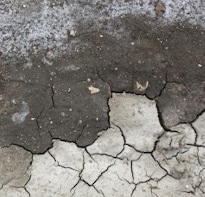According to a new United Nations study, salt-induced land degradation has been on the rise. Salt-degradation is common in arid and semi-arid areas that receive less rainfall because of which there isn't enough water seeping through the soil. It is also seen in areas where irrigation is practiced without a natural or artificial drainage system.
up to 40 per cent, 45 percent, 48 per cent, and 63 per cent, respectively.According to the team, reversing land degradation and reviving salt-affected areas back into a highly productive state is of the utmost importance to achieve favorable environmental benefits coupled with economic gains.Inputs from PTI
Advertisement
up to 40 per cent, 45 percent, 48 per cent, and 63 per cent, respectively.According to the team, reversing land degradation and reviving salt-affected areas back into a highly productive state is of the utmost importance to achieve favorable environmental benefits coupled with economic gains.
Advertisement
For the latest food news, health tips and recipes, like us on Facebook or follow us on Twitter and YouTube.
Advertisement
